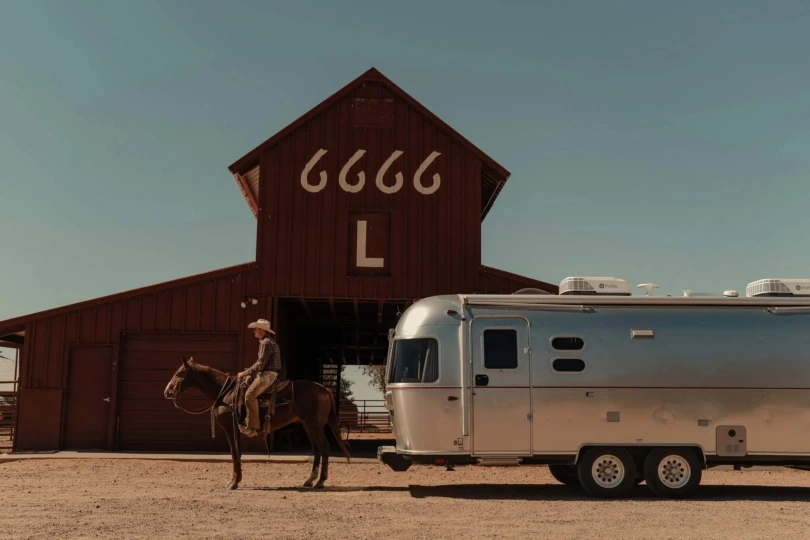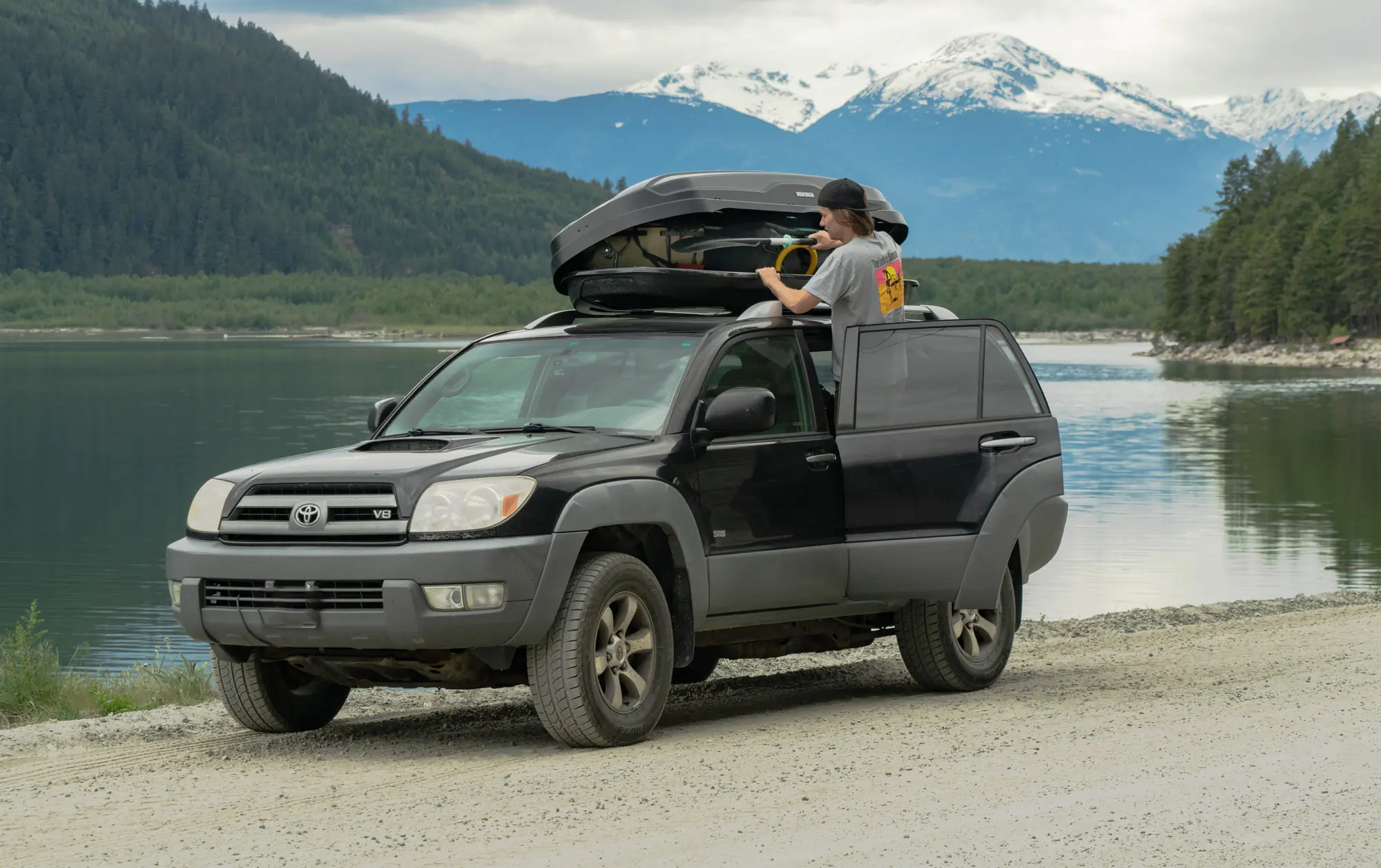Peer-to-peer RV rental companies can net you big money, but there are costs.
Did you realize that your Airstream could be netting you $40,000 a year? Peer-to-peer (P2P) RV rental companies promise just that, and the competition to become the Airbnb of RVs is red-hot.
Can you really pull in that much cash? Which site/app is the best to list on? Should you buy an RV, campervan, or overland vehicle to rent out? These are all great questions, and I’ve got some pretty solid answers for you from my recent research and experience.
I wanted in, so I bought my own class B money-maker van. Read on to find out how it went and whether my marriage survived the #RentalVanLife adventures.
Don’t Let Your Camping Machine Sit Idle
In 2020, Kampgrounds of America (KOA) reported that campers and non-campers alike ranked camping as the safest type of lodging while traveling. Fifty-six percent of leisure travelers, 63% of campers, and 49% of prospective campers felt camping was safer than other forms of travel accommodations.
Not only are camping and RV travel quite safe in pandemic times, but they can also be super affordable. When you factor in skyrocketing rental car prices, a home on wheels for $200 per night is seriously compelling.
On average, RV owners in the U.S. log about 5,000 miles annually. If you have limited vacation days, your rig is likely stagnant 48-plus weeks of the year. That means it’s sitting idle most of the time when it could be on an adventure and bringing in real cash for you — if you’re into a little side hustle.
OK, maybe a lot of side hustle. I learned quickly that this isn’t easy money.
P2P Rental Basics
In a perfect world, this would be easy: Hand over your keys, wave goodbye for a few days, profit!
In the real world, there are so very many pitfalls. What if your renter had their license revoked? What if they set the kitchen on fire? What happens when their flight is delayed, and they can’t pick up the RV at the scheduled time? And when you fail to tighten the lug nuts, what happens if they decide to sue you?
Suddenly you realize that, as with all enterprises, there’s real work and risk involved. Fortunately, the aforementioned RV rental facilitators can make this much easier.
How much easier depends on what model you choose — and we’ll guide you to the choice that works for you.
Choosing a Rental Model
For a totally hands-off experience, you can follow the consignment route with an outfit like Northwest Adventure Rentals. The company manages not only the turnover and customer interaction but also the cleaning, vehicle maintenance, and more. You hand over the keys, and they take care of the rest. They also take the biggest cut — a whopping 40-60% of the rental income.
If you’re willing to do some of the work yourself, consider the “peer-to-peer” or “Airbnb” model. Peer-to-peer models offer the best income, with commissions varying from 15% to 25%.
Some companies you’ve likely already heard of include Outdoorsy and RVshare. These are big players with tens of thousands of wheels in their fleets. They connect you directly with potential renters, and you can choose whom to work with.
After the connection, all the work is on you. You’ll have to build your own listing profile (consider hiring a professional photographer) and screen your renters diligently. Your RV will have to be outfitted with all required amenities and be filled with fuel and cleaned for every renter.

Smaller boutique P2P models such as GoCamp offer a bit more service. They hold your hand throughout the entire process to make sure your listing has dynamite photos and your customers walk away happy.
While this can be a nice option, GoCamp is currently limited to a few Western cities and only accepts class B RVs (van-sized). Also of concern, you might not get the leads needed to be successful, as smaller websites generally see fewer visitors. GoCamp is an exception, however, as it has cross-listing agreements with Outdoorsy and RVshare.
Renter Screening
At a minimum, all P2P services conduct a driver’s license check. Any renter with multiple traffic violations, DUIs, etc. will be flagged. That doesn’t mean you’re always getting a solid driver, but it’s a good start. As with most rental vehicles, drivers must be 25 years or older to apply.
Insurance
You might have second thoughts about handing the key of your $80,000 toy to a total stranger, but that’s the name of the game. Fortunately, all these rental groups offer solid insurance as part of their services.
First is up to $1 million in liability if a renter files a lawsuit against you. Second is protection for your vehicle; in this case, the renter takes responsibility for the duration of the trip. They can choose how much coverage they want during checkout.
Typical RV insurance only covers the vehicle while it’s in your possession. Renters’ insurance takes effect as soon as you hand over the keys. Bigger sites such as Outdoorsy and RVezy utilize a cellphone app to make the vehicle damage check process painless. Owners and renters can digitally sign an agreement before a trip starts.
Roadside Assistance

Roadside assistance options are available for renters to purchase at their discretion. In some cases, you can require renters to select this option. Beyond that, you, as the owner, are responsible for the integrity and roadworthiness of your vehicle.
Maximizing Income
Add-on items and services allow you to maximize your profits. If you have a couple of surfboards that don’t get used often, you can add them as an option for a daily fee. Bikes, paddleboards, and rack systems are all popular side orders for an RV adventure. Some sites will also allow you to profit from airport pickup and dropoff if you’re willing.
Choosing a Rental Company
So now you know the risks and rewards, which company is right for you? The short answer is that you can’t go too wrong. The RV rental industry is mature, and the cream has risen to the top.
We feel confident recommending any of these RV rental networks. The decision depends on which trade-offs work for you. First, let’s narrow down the options based on the type of RV you have.
 There are a lot of opinions out there on the interwebs and Reddit, so you can find an argument for any of these companies. You’ll find horror stories as well as tales of fortunes made renting travel trailers.
There are a lot of opinions out there on the interwebs and Reddit, so you can find an argument for any of these companies. You’ll find horror stories as well as tales of fortunes made renting travel trailers.
We focused on data and hard numbers for comparison. We also called each service just to make sure you can speak to a human on the other end and quizzed them about crucial details. Here’s a quick rundown:
Outdoorsy
Outdoorsy is the biggest fish in the pond. Like Airbnb, prospective renters can message first or just request to book; a deposit is required to formally request a booking. Outdoorsy’s app also features messaging, pre-departure photos and claims, and a digital manual about the vehicle.
Similar to RVezy, Outdoorsy takes 20% off the top of all fees. Older vehicles, including vintage RVs, are encouraged to list. They also have complimentary listing advisors that will help you improve your listing.
RVshare
The next largest is RVshare. Besides taking a larger cut (25%), RVshare is very similar to Outdoorsy. It also offers one-on-one consultations with an advisor to help perfect your listing.
RVshare doesn’t offer a cellphone app but has a robust web interface.
RVezy
RVezy accepts all styles of RVs — classes A, B, and C as well as trailers. Motorized RVs must be newer than 20 years old (25 years for travel trailers). The company takes 20% off the top of all bookings, cleanings, add-ons, and fees.
Its app is solid and allows for easy, secure communication between the renter and owner. The app also facilitates the pre-ride checkout and claims process.
Strangely, by default, renters are not required to buy supplemental insurance. If you go with RVezy, make sure you know to select that accordingly.
GoCamp

GoCamp only allows class B RVs, but they can be any age. They target the #vanlife crowd and operate in a handful of cities in the Western U.S.
GoCamp returns the most to you with a 20% commission that only applies to the base rate (not cleaning or add-on fees). If you list more than one van, that drops to 15%.
GoCamp effectively curates your post during the process. If you’re not handy with photos, the company offers to send your van out with a photographer in exchange for a night of rental. The word “curated” could not be more appropriate here; it’s a very polished brand.
GoCamp also manages interactions with potential renters before introducing those renters to you. This keeps you from being barraged with simple FAQs. One downside is that most requests to change your calendar or otherwise manage your listing require emails, as there’s no GoCamp app yet.
What Worked for Me
I did a ton of research. I knew I wanted the income of the P2P model but with as little work as possible. In the end, GoCamp was an easy choice. I grilled its coordinator for at least an hour (she is terrifically patient) before signing up.
The onboarding process is lengthy, with many online forms that build your listing page and a “road ready” manual. It’s a few hours, but it’s time well spent to attract renters and set them up for success.
My van, Milo, currently rents for about $200 per night. I also offer surf, paddleboard, and bike racks as optional add-ons to maximize my profits and keep the dust off of some of the gear in my outdoor adventure quiver.
I was only able to get my rental up and running for the last 6 weeks of summer, but my calendar filled up almost immediately. I would estimate that my take was around $3,000 per month for July and August. In the offseason, I’m guessing that will drop to $2,000 per month or less when the snow hits.
I’ve had mostly good renters — a few missing and broken items are just the nature of the business. If you’re the type who fawns over your RV like a pet, this is not the side gig for you.
Investment: Money, Time, Energy
Money
Here at GearJunkie, we live the experience, and so as a part of reporting on P2P RVs, I bought and listed my own RV.
I loved the sensible layout and practicality of the classic VW Westfalia style, but the newest “westy” eurovans are now 20 years old! Fortunately, I spotted a 2016 Mercedes Metris conversion that’s the same layout but much newer. The only problem is that it was in Austin, and I live in Portland.
After some back-and-forth with the owner, I booked a ticket to Texas and handed over $38,000 cash, the first purchase for my van rental company “Avantura” (Croatian for “adventure”!).
I had the next 2,473 miles to figure out all the systems on my new Mercedes. I realized I desperately needed a stool to reach the upper bunk and fitted a cover for a very noisy overhead vent. I kept a journal as I figured things out, which would turn into a manual for my renters.
By the time I got back to Oregon, I’d spent hours figuring out how I wanted to outfit Milo. I quickly dumped another $3,000 into upgrades, springing for a modern lithium battery system from Dakota Lithium. I wanted my renters to be able to travel for days without worrying about power.
How Much Is Your Time Worth?
While you might consider this “passive income,” it’s not without its costs. Owners are responsible for cleaning and re-outfitting vans before delivery. Depending on the program, you might be doing a lot of laundry and dishes between rentals, not to mention washing and cleaning your RV.
Propane and gas refills also eat away at your time. For some, a few hours to turn over a van will be well worth the income — just don’t discount the effort required.
It’s also important to budget your time for meeting with renters when they arrive and going over all the various RV systems and features so they know how to use them correctly. Plan to spend at least 30-45 minutes each time. You don’t want to risk a propane fire or sewage surprise because someone didn’t close the right valve.
Energy
Think about Airbnb-ing an apartment and renting a car at the same time — you get all the problems combined. It’s a lot to clean and turn over an RV, especially when you adopt the full-service model providing linens, cookware, headlamps, etc. There are so many little things to check. Are the batteries charged? Did they leave the chairs filthy?
It helps to put a system in place and have checklists, but the amount of work is not trivial.
Is It Worth It?
I’m an engineer — so naturally, I have a spreadsheet that accounts for upfront costs, maintenance, depreciation, business registration, and even budgeting my time. On paper, so far, I’m looking great!
It’s amazing to think that with the income I’m bringing in, Milo will be paid for by the end of next summer … but I might not last that long.
The impact on my personal life and being at the whim of renters is a burden. I made the mistake of asking my wife to clean the van and hand off the keys while I went sailing in the San Juans for a week. She called in tears after the detailer I’d scheduled didn’t show up, and the van’s cabinets wouldn’t open just hours before a renter was scheduled to arrive. Yes, there may be relationship costs!
On the other hand, it’s been tremendously gratifying enabling people’s adventures and dreams. I really enjoy sending people away with the keys. Plus, long-term rentals make for more profit with far less work. I have a renter in October taking the keys for 2 weeks, netting me $2,600.
So the jury is still out! If you already own an RV, the potential revenue is compelling. But I wouldn’t necessarily recommend buying a vehicle just for the side income.
For us, the upside of having a fully kitted van for our own adventures is well worth it. I reserve a weekend with Milo for personal trips every couple of months. When you pop the top at the beach and crack open a beer after surfing, it’s all worthwhile.
















